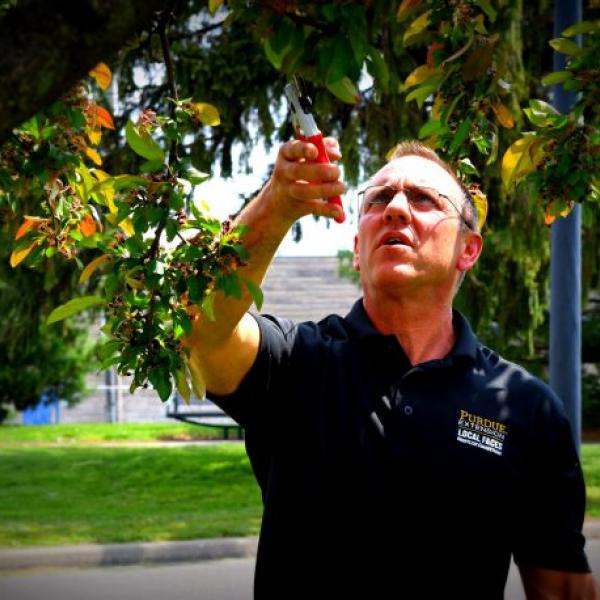
COLUMBUS, Ind. – When it comes to pruning trees, it’s easier to start when the plant is newly established.
The more formative pruning done to a tree, the less work it will require later on.
“Whenever you prune, you’re going to have a major impact on that tree,” said Lindsey Purcell, urban forestry specialist at Purdue University.
“Trees are the oldest, largest living organism on the planet. They’ve done pretty well without our help. But when put in an unnatural environment, they need a lot of help and a higher level of care based on risk and sustainability.”
The primary reason to prune is for clearance and safety around street lights, signs, power lines and infrastructure.
Picking the right tree and giving it space to grow will make a difference in how often it has to be pruned, Purcell said. Pruning can get expensive and time consuming.
It’s a good idea to reduce pruning live tissue during droughts, when the tree has fewer resources.
Dead limbs can be pruned any time, but it’s best to prune live branches at a time when the tree is biologically active, Purcell said, so that it can heal faster.
“There are few ground rules for pruning,” he said. “Remember you’re altering the physiology of the plant, both its ability to take up water and produce food and the hormonal system of the plant. How we prune it will direct growth.
“Small wounds are better than big wounds when it comes to pruning. When you prune, you wound the tree, so you want to do it right. That’s why formative pruning of young trees is so critical. It’s also easier to prune when the tree is only seven feet high.”
Safety is another important consideration. If you’re pruning, make sure you have eye protection and a safety helmet.
Look for and prune out the following problems:
* Dead or dying twigs and branches.
* Over extended and weak large branches.
* Basal sprouts growing near the base of the trunk.
* Water sprouts growing vertically from branches.
* Weakly attached branches in decline.
* Crossing and rubbing branches.
* Narrow branch angles and codominant branches.
Proper cutting angles and methods should be used when pruning. Free resources and technical details can be found by searching “Purdue tree pruning” online.